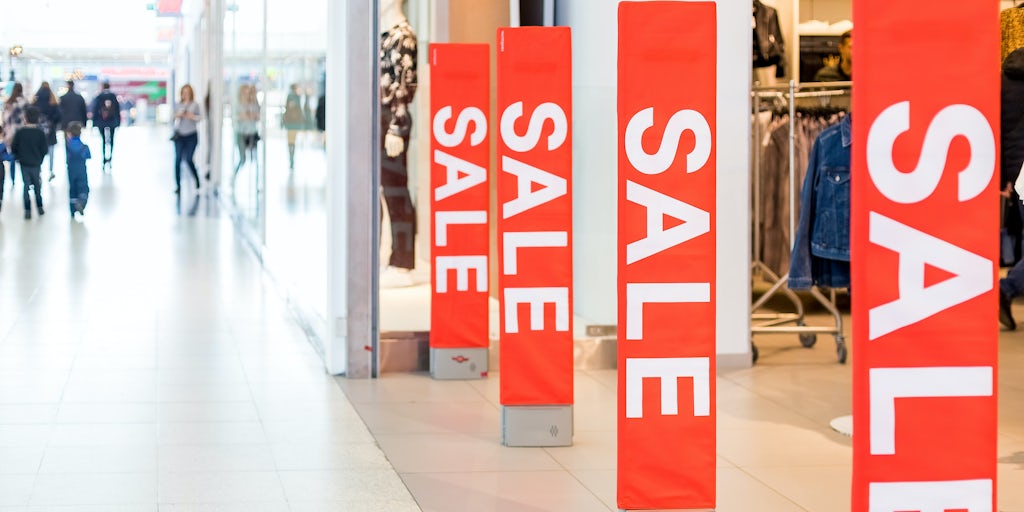Q&A With Management One’s Michael Alic – WWD
Late last month, Management One, which offers merchandise planning and business insights for specialty retailers, named Michael Alic as its president — marking “a new phase of growth for the indie retail leader,” the company said.
Previously, Alic served in various leadership roles at Informa plc, Trader Classified Media, UBM plc and Advanstar Communications Inc. and is known for managing MAGIC and Coterie. Here, Alic discusses Management One’s services, and how the firm helps specialty retailers navigate disruptions such as the COVID-19 outbreak.
WWD: What are the services offered by Management One, and who is the typical retail client served?
Michael Alic: Management One helps retailers improve their inventory management, their merchandise purchasing, and ultimately their cash flow. Through automated connections, we collect data from stores’ POS systems. We then analyze the data with our proprietary software called Retail Orbit. We go through the data by category of merchandise, looking at sales, purchasing, merchandise receipts, markdowns, and so forth. We use that analysis, and data from similar stores, to develop a sales forecast, target levels of inventory and a purchasing plan.
We also refine that plan using our network of expert consultants, who then deliver the plan to the retailer, turning numerical data and reports into an action plan that helps the client improve its sales, its margins and its cash flow. Our consultants check in with the client monthly, helping them keep on track and revising the plan as necessary. Our consultants, being retail experts, also act as informal advisers to clients on other matters related to their business, whether it’s assortment planning, store layout, staff management or anything else.
About 70 percent of our customers are in apparel, footwear and accessories, but our service works for almost any vertical. We also have customers in pet supplies retailing, college bookstores, feed stores, kitchen, home furnishings and more. In terms of size, most of our clients have annual revenue from $1 million to $5 million, but we have customers with $50 million in annual sales and others who do $500,000.
WWD: How can data and data analytics be better leveraged by specialty retailers, and how does Management One help with that?
M.A.: Most specialty retailers were created and are owned by a person with a passion for finding the perfect products, or for selling and communicating with customers, or both. Relatively few entered retailing because they were passionate about calculating inventory turns or margins, or analyzing inventory freshness. But at the end of the day, merchandise purchasing typically represents 50 percent or more of the expenses of a retailer, and that same merchandise usually represents 100 percent of revenues.
So understanding, quantitatively through analytics, how to purchase more intelligently, how to use markdowns strategically, and how to free up cash flow by purchasing smaller quantities more frequently, can be extremely valuable. We gather the data, produce the relevant analytic reports, create detailed open-to-buy budgets, and then spend time with the retailer so they can turn the reports into action.
WWD: Given the challenges of the current market, how do you help your retail clients manage change?
M.A.: One of the things we realized early during the COVID-19 pandemic was that retailers were frantic for knowledge and insight into how to manage through a crisis. They were looking for guidance — from experts, from peers, from anyone credible. So we formalized in a sense the client-by-client education we had been doing all along and brought it to the community through a webinar series. The first series was six webinars about mitigating the negative effects of the COVID-19 crisis, and we are currently in the middle of our second six-part series about re-opening and recovery.
We try to make all of these sessions interactive — and we have a mixture of outside experts, Management One leadership, and retailers as panelists. It is refreshing to see the interactions between retailers sharing inspirational, innovative ideas and offering support to people they have never even met. Watching the retail community come together in the spirit of collaboration has been very rewarding. There are two sessions left in the current series, and details can be found here.
We also created a series of tools that enable retailers to make better decisions in uncertain times, focusing them and their energies on the activities that can sustain them through the pandemic. One example is our “Retail Recovery Playbook.” We’ve also shared cash flow models, vendor analysis tools and so forth.
What we’ve found is that we need to bring new information to retailers, we need to challenge them to think differently, and we need to reassure them that they’re not alone.
WWD: What’s your overall sense of the retail climate as we move into the second half?
M.A.: We get a sense of the retail climate both through the sales data we’re gathering every day through our “Retail Orbit” system and through our conversations with retailers. The answer, for now, is that there is no one answer. Different verticals and different regions are having wildly different experiences. We have also worked with our retailers to right-size their businesses and develop plans based on reasonable expectations, and not focus on last year, which is their custom.
That said, overall we saw a clear improvement in year-over-year sales trends from April to May, and we’ve seen further improvement in the first 10 days of June. In some areas, there does seem to be pent-up demand. People reduced their spending during confinement, and they received government checks of $1,200 each, and supplementary unemployment if they lost their jobs. So now that things are opening up, we may see a bump in sales.
Nonetheless, things are still tough overall. Obviously, during the COVID-19 lockdowns and confinements, e-commerce accelerated even further, including from stores that had previously not focused on selling digitally. I think it’s been a real wake-up call for retailers about meeting their customers where they are. Selling in-store, selling online for in-store or curbside pickup, selling online for postal or courier delivery, selling socially — all of these have to be part of the mix.
I do worry that if the federal government doesn’t extend or replace some of the measures for small businesses and consumers that were created in April and May, the late summer and fall could be difficult. And if there is a resurgence of COVID-19 infections, that could complicate things even further. Overall, retailers and consumers are feeling antsy to get out and work and shop, but they’re also still feeling cautious, borderline anxious.
That said, well-managed retailers will make it through the crisis and have opportunities to come out stronger when things return to normal.


